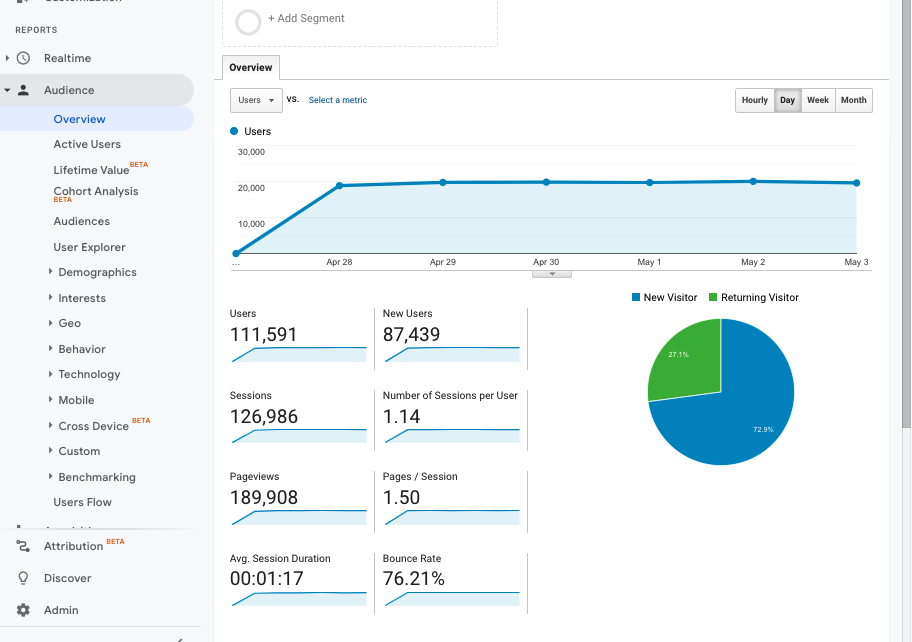
Google Analytics is an integral part of any website or blog. It tells you how your site is doing and where there might be problems. However, Google Analytics can be overwhelming with all the data it provides. Fortunately, this article walks through five simple ways to use Google Analytics for conversion.
Description of Google Analytics
Google Analytics is a free web analytics tool that helps you track your website’s traffic and performance. You can use it to see how many people visit your site, where they come from, what they do on your site, and more.
You can also use Google Analytics to track your website’s conversion rate. This is the number of visitors who take the desired action on your site, such as subscribing to your newsletter or making a purchase.
There are many ways to use Google Analytics to improve your website’s conversion rate. Here are some of the most effective:
1. Use goal tracking to measure conversion rates.
2. Use landing page reports to see which pages convert best.
3. Use exit page reports to identify problem areas on your site.
4. Use demographic and interest reports to segment your audience.
5. Use custom reports to track specific conversions.
By using these features of Google Analytics, you can get a better understanding of your website’s traffic and performance, and make sure that more visitors are taking the actions you want them to take.
What to track with Google Analytics
If you want to use Google Analytics to improve your website’s conversion rate, there are a few things you’ll need to track. First, you’ll need to track pageviews. This will give you an idea of how many people are visiting your website.
Second, you’ll need to track how long each visitor spends on your website. This will give you an idea of how engaged they are with your content. Third, you’ll need to track what actions each visitor takes on your website. This will give you an idea of what’s working and what isn’t. By tracking these things, you can start to see patterns that will help you improve your conversion rate.
How to set up conversion tracking in GA
1. To set up conversion tracking in GA, you need to first create a goal. A goal is a specific action that you want your users to take on your website, such as making a purchase or signing up for a newsletter.
2. Once you have created a goal, you need to add the goal tracking code to your website. This code will track when users take the desired action on your site.
3. You can then view your conversion data in GA. This data will show you how many users completed the goal and what percentage of users converted.
4. You can use this data to improve your website and increase conversions. For example, if you see that a certain page on your site has a high conversion rate, you can add more content to that page or make it more visible on your site.
How to use goals in Google Analytics for conversion
Google Analytics is a powerful tool that can help you track your website’s performance. One of the most useful features of Google Analytics is goals. Goals allow you to track conversions on your website.
There are four types of goals in Google Analytics: destination, duration, pages/screens per session, and event. Destination goals are the most commonly used type of goal. To set up a destination goal, you need to specify the URL that you want to track as a goal. For example, if you want to track sales on your website, you would specify the URL of the thank-you page as your goal.
Duration goals allow you to track how long users spend on your website. Pages/Screens per session goals allow you to track how many pages or screens users view on your website. Event goals allow you to track specific events, such as button clicks or video views.
To set up a goal in Google Analytics, go to the Admin section and click on Goals. Then click on +New Goal and select the type of goal that you want to create. Enter the necessary information and then click Save.
Once you have created a goal, you can start tracking conversions on your website. To do this,
Tips for using goal funnels in Google Analytics
There are a few key things to keep in mind when using goal funnels in Google Analytics. First, make sure that your goals are properly configured. This means that you should have a clear idea of what constitutes a conversion on your website or app. Without this, it will be difficult to accurately track conversions using goal funnels.
Next, you need to ensure that your tracking code is installed properly. The tracking code is what allows Google Analytics to track user behavior on your website or app. If it is not installed correctly, goal funnels will not work properly.
Finally, make sure that you use the proper filters when setting up goal funnels. This will help to ensure that only relevant data is included in the funnel. By taking these steps, you can ensure that goal funnels are set up properly and provide accurate data about conversions on your website or app.
Conclusion
Google Analytics is a powerful tool that can help you track and improve your website’s conversion rate. By tracking key metrics such as pageviews, bounce rate, and time on site, you can identify areas of your website that need improvement. Additionally, Google Analytics can also be used to track the effectiveness of your marketing campaigns and social media efforts. If you’re not already using Google Analytics, we hope this article has inspired you to start using it to boost your website’s conversions.



Leave a Reply